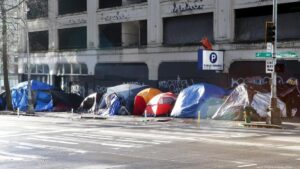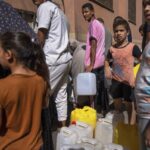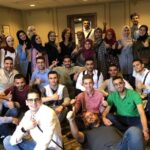In Seattle, there is a huge homelessness crisis. After New York and Los Angeles, it is the metro area with the third highest homeless population. (MyNorthwest) That being said, when you walk the streets you don’t go a single block without seeing multiple homeless people. When I’m in my car or in my area I usually wave but in downtown Seattle, I walk past without acknowledgement even though I know that can be “othering.” Being a young woman walking through the streets of downtown I worry about how my wave will be taken. It is more practical to lump people into a group and effectively “other,” them when considering safety. This is how the other women I know act when walking through the streets of downtown as well- keep your head down and don’t give anyone an invitation to bother you.

However, treating the homeless population as one group is very othering and thus has consequences. Walking with your head down when passing members of a demographic group is to not treat them as ends-in-themselves but rather as members of a statistical group. Since some homeless people in Seattle cat-call or commit acts of violence, the safety response to these individuals effectively others the rest of the homeless population who does not act as such. Additionally, it is to ignore the complex diversity of this group and lump them into a homogenous group. It is to be unsympathetic to the individuality of the homeless people you pass on the street and not treat individuals with the care they deserve. The care that has been stripped from them purely through being members of a demographic group.
When studying the Jordan Valley we need to be careful about stripping the individuals in these communities of the same care through “othering.” While it is practical to lump members of these states into demographic groups and populations when performing analysis, we need to recognize the individual diversity of this group and not homogenize them. This can be hard to fully address in academia since most analyses require this grouping. Ideas for what combatting othering in academic could look like includes a footnote in a paper recognizing the diversity of a group or a more lucrative paragraph on the complexities of a group.
Furthermore, it is important when discussing instances of violence or tragedy to not gloss over a statistic and display care in writing about it. Even if you don’t explicitly state all your empathetic thoughts on the instance in your writing keeping a caring mindset reduces the internal othering, and I think can ultimately strengthen your argument. If this care perspective is unappealing to academics as motivation to reduce othering, there is a practical advantage as well. When we lump people into homogenous groups we may end up making false predictions on their behaviors and motivations. To not recognize the complexity of the group is to fail to understand the group and that could result in incorrect analysis. However, I find this attitude less compelling and maybe even playing into othering. I think we ought to approach the political analysis we do with care in order to treat those in the states that we are studying as individuals rather than distant others. Overall, it is important to remember that we are talking about individuals and we are “others,” to someone across the world as well.


waynec
September 27, 2023 — 2:22 am
Thank you for this post, Izzy. You mention in your final paragraph a “care mindset” in regards to writing. Do you think it is practical to apply this mindset in all contexts? For example, do you think, perhaps, there are exceptions were remaining neutral may in fact be more beneficial to analysis, allowing for the researcher to compile a complete picture which accounts for many different perspectives on a given event or tragedy?
Ed Webb
September 27, 2023 — 8:32 pm
I find the ethical concerns here quite persuasive. But Claire’s question does point to some of the difficulties, and I read your piece as already aware of these, when it comes to analytic approaches. We cannot do social science without abstraction and categorization, even while being aware of the violence those processes do to reality. I’m not sure if the neutrality Claire mentions is a necessary value, but accuracy and precision are both things we seek in analysis. Does a care ethic or mindset find itself in conflict with those goals?